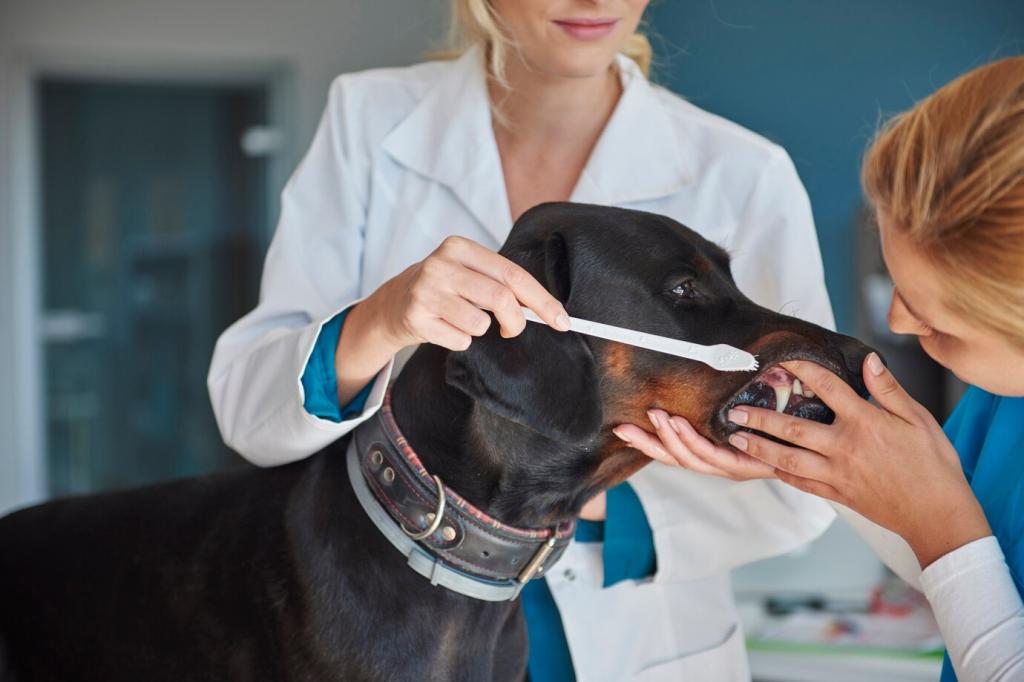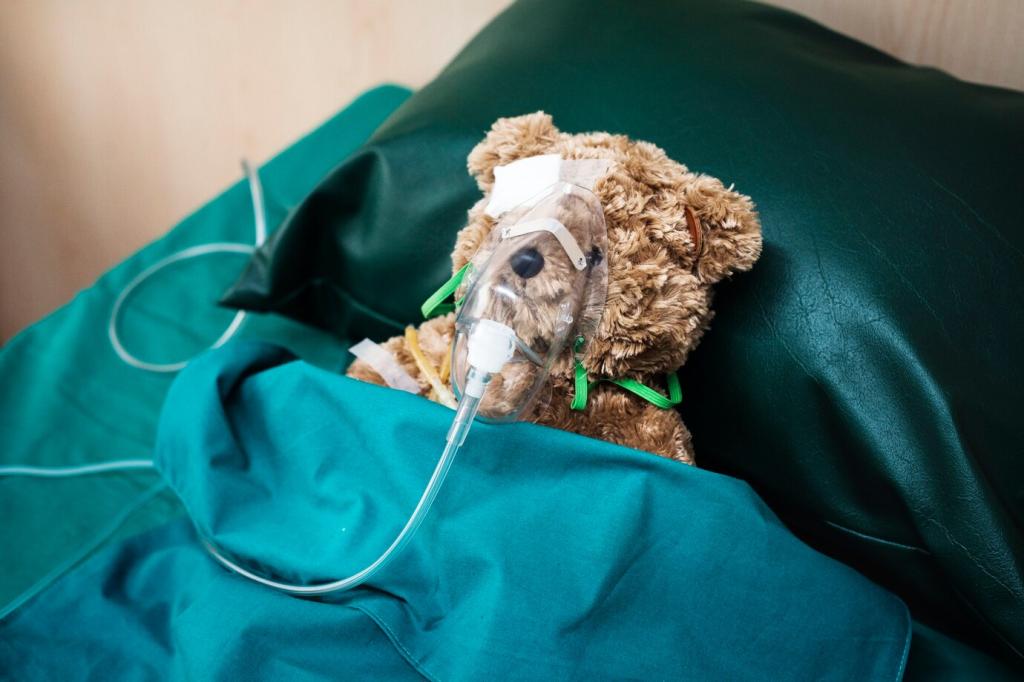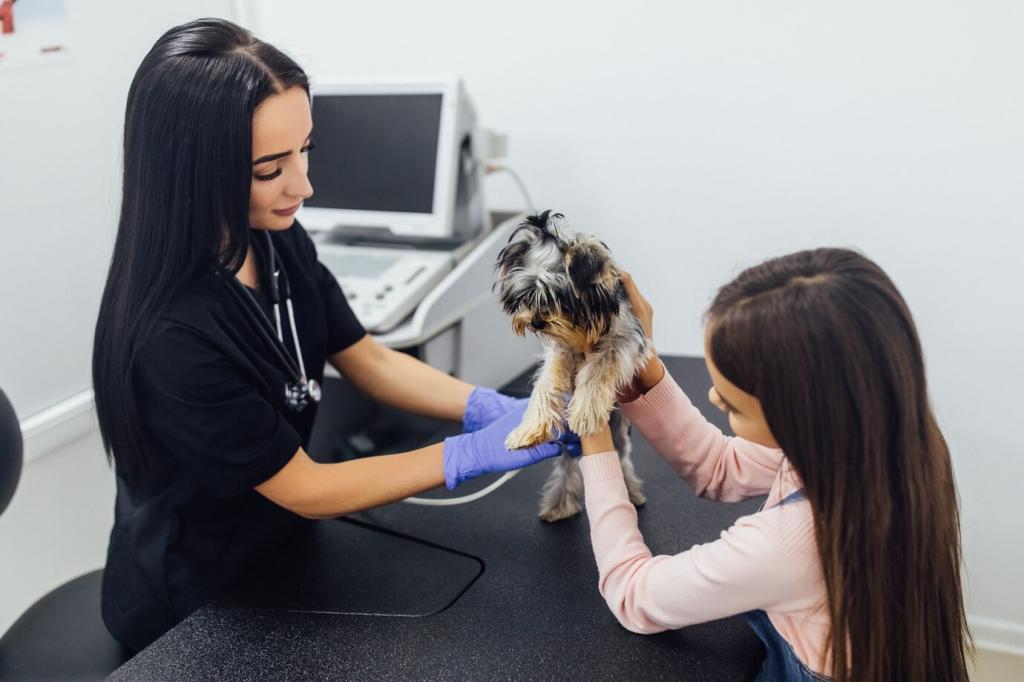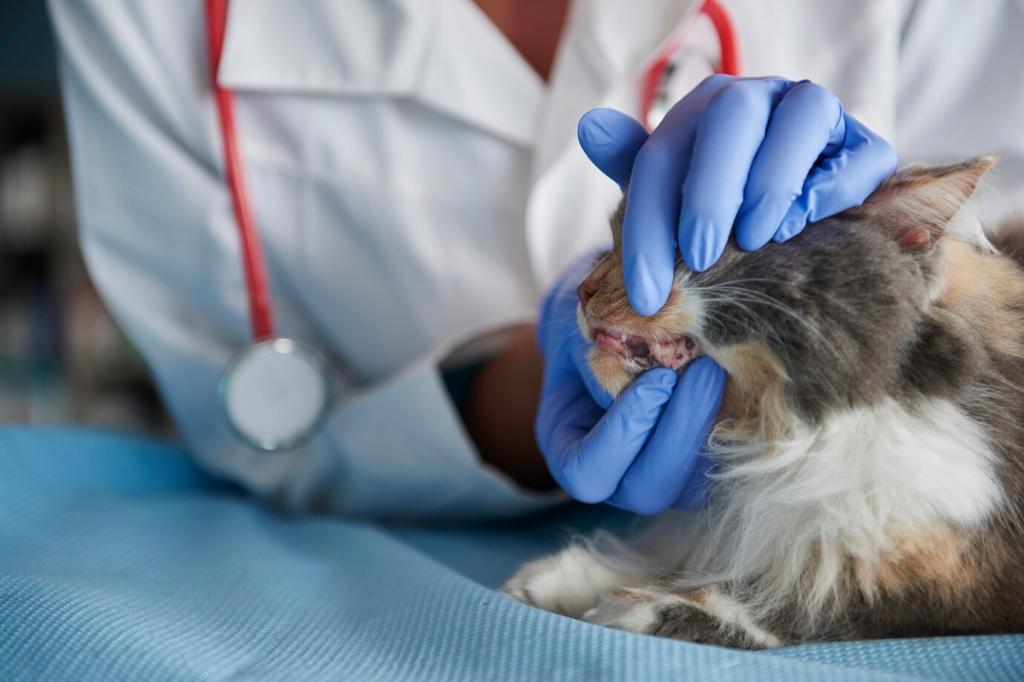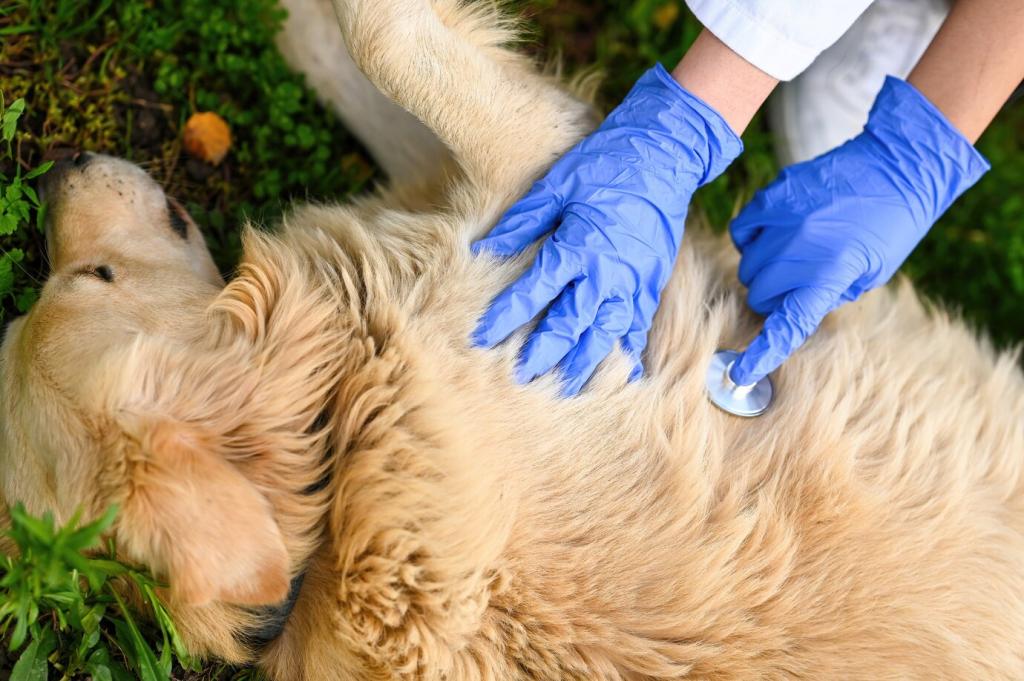Home Care and Rehabilitation Essentials
Set up a quiet, non-slip space with limited jumping opportunities, comfy bedding, and secure barriers. Elevate food and water if advised, and schedule calm potty breaks. Consistent routines reduce anxiety, which supports better sleep and smoother, steadier healing.
Home Care and Rehabilitation Essentials
When your veterinarian approves, start controlled leash walks, passive range-of-motion, and simple weight-shifting exercises. Keep sessions short, stop at the first sign of discomfort, and record progress. Small, consistent steps beat weekend heroics for building durable, confident strength.
Home Care and Rehabilitation Essentials
Watch for foul odors from bandages, swelling above or below a cast, heat, persistent crying, or sudden lameness changes. Track appetite, sleep, and mood. Share a weekly recovery journal with your veterinary team to catch concerns before setbacks grow.

